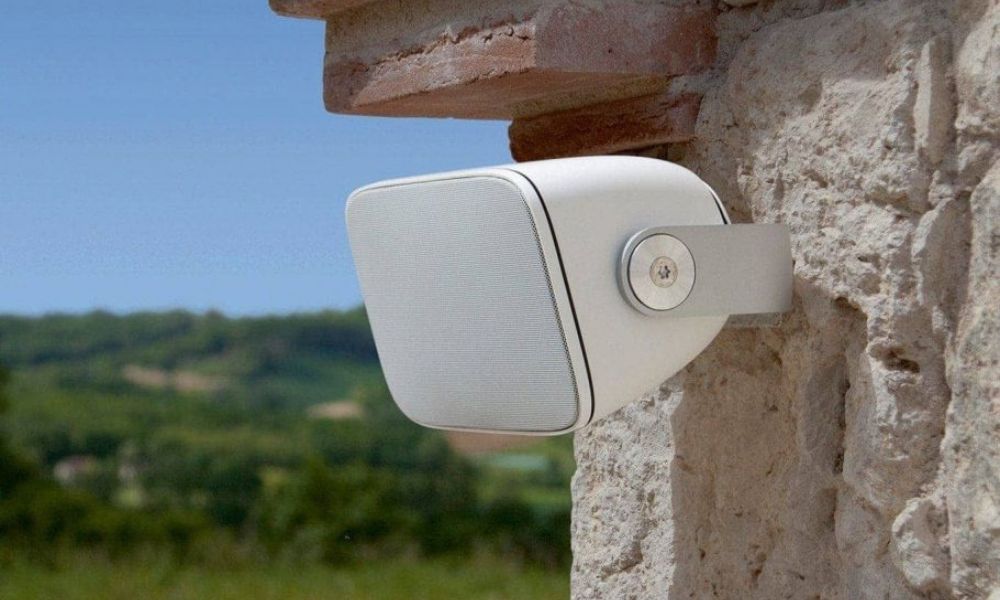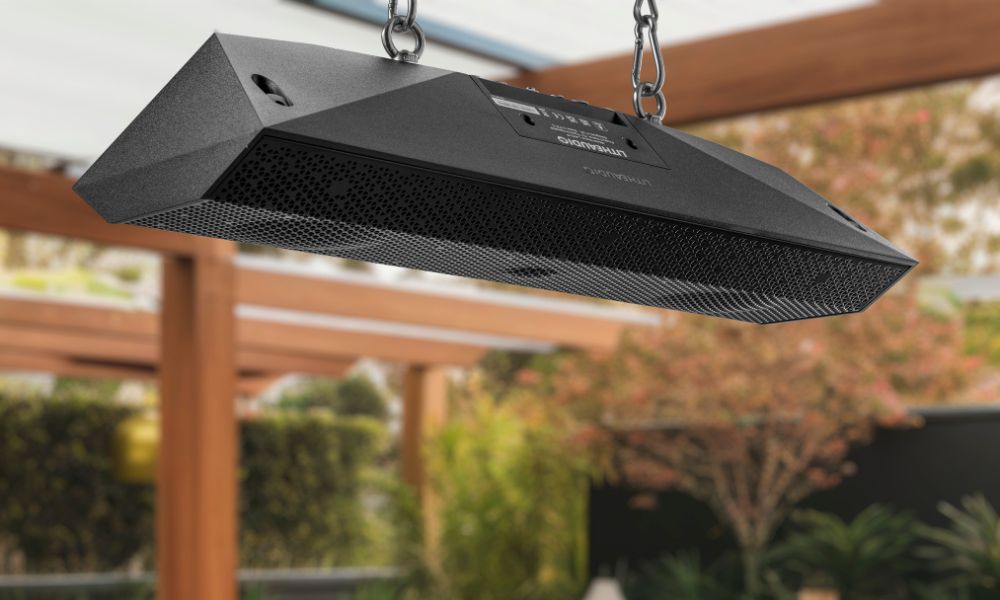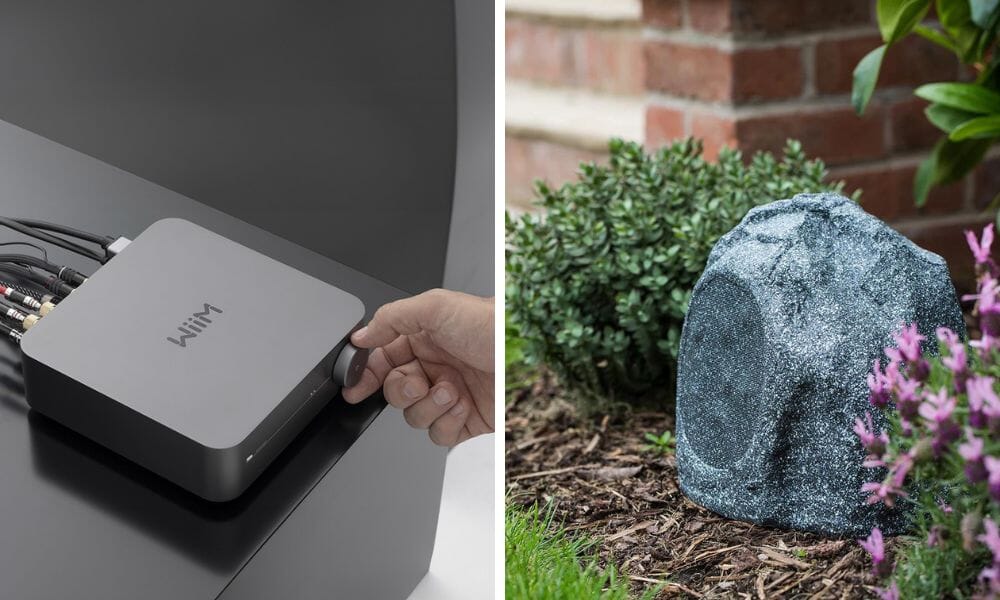If you're looking to add some music to your garden or patio you may be wondering if your outdoor speakers will need an amplifier?
Well the answer is yes, outdoor speakers will typically require an amplifier in order to work.
The only exception is for active outdoor speakers which feature a built-in amplifier and audio source such as Bluetooth.
In this blog we'll cover the two main types of outdoor speakers and whether or not they require an amplifier.
The Two Main Types Of Outdoor Speakers
1. Passive Outdoor Speakers
Passive outdoor speakers are speakers designed for outdoor use that do not have a built-in amplifier.

These speakers require an external amplifier to provide the necessary power and for audio streaming such as Bluetooth or WiFi.
Here are key features and considerations regarding passive outdoor speakers:
-
External Amplification: Passive outdoor speakers need to be connected to an external amplifier to function. The amplifier provides the electrical power required to drive the speakers and the audio source such as Bluetooth to stream your favourite music.
-
Versatility: Passive outdoor speakers offer greater flexibility in choosing an amplifier that suits your specific requirements. This allows you to tailor the audio setup to your preferences and space.
-
Wiring Setup: Passive outdoor speakers require speaker cable to be installed between the speakers and the amplifier. The length and gauge of the speaker wire are important considerations to ensure proper performance.
-
Customisation: With passive outdoor speakers you have the option to mix and match speakers and amplifiers based on your audio preferences and the specific requirements of your outdoor space. You can use higher-end amplifiers, better quality speakers and in most cases can run up to four speakers from a standard stereo amplifier.
-
Scalability: Passive outdoor speakers are suitable for larger outdoor areas, and you can expand your audio setup by adding additional speakers and amplifiers as needed, especially if you're using WiFi multiroom amplifiers.
When setting up a system with passive outdoor speakers it's essential to choose an amplifier that matches the speakers power requirements and impedance.
Additionally you should make sure that all components, including the speaker wire and connectors, are suitable for outdoor use.
Don't forget that your amplifier is not going to be water resistant, this must be installed in a dry water tight location such as in the house, garage, garden room etc. We strongly recommend investing in a WiFI based amplifier such as the WiiM AMP or Sonos AMP as it's far easier to install and control from your smart phone or tablet.
While passive outdoor speakers require a separate amplifier and some extra cabling, they do provide you with the flexibility to choose the best outdoor speakers for your budget.
You can connect any compatible passive speaker to an amplifier so if you specifically want to use Q Acoustics outdoor speakers then you can connect these to any amplifier, you're not limited like you are with an active outdoor speaker.
2. Active Outdoor Speakers
Active outdoor speakers, also known as powered outdoor speakers, are speaker systems that come with built-in amplifiers.

Unlike passive outdoor speakers which require an external amplifier to provide power, active outdoor speakers have the amplifier integrated directly into the speaker housing.
This integrated design simplifies the setup process and reduces the need for additional components, but does limit your choices.
Here are key features and considerations regarding active outdoor speakers:
-
Built-In Amplification: Active outdoor speakers have amplifiers integrated into the speaker enclosure. This eliminates the need for a separate external amplifier to power the speakers. They are plug & play!
-
Ease of Setup: The setup process for active outdoor speakers is typically more straightforward compared to passive speakers. You only need to connect the speakers to a power source, pair your smart phone and play your music.
-
Compact Design: Active outdoor speakers are designed to be compact and self-contained, making them suitable for various outdoor environments. The built-in amplifier allows for a more streamlined and space-efficient solution so they're quite effective at smaller areas such as covering a patio or small deck area.
-
Convenience: With the amplification built into the speakers, active outdoor speakers offer a more convenient solution for those who prefer a plug-and-play setup without dealing with separate amplifiers and additional wiring.
-
Integrated Features: Most active outdoor speakers will include additional features such as Bluetooth connectivity or WiFi streaming allowing you to play your music easily via Bluetooth or an app.
Active outdoor speakers are suitable for various outdoor applications including patios, decks, gardens, and pool areas, providing an all-in-one solution for outdoor audio enjoyment.
Just remember that you're limited to the speaker and amplifier itself. You often can't connect more than one pair (unless it's a WiFi system) and you won't be able to upgrade anything.
Conclusion
Now that you know the main two types of outdoor speakers and the amplifier requirements you should hopefully have a better idea of what you need for your garden audio project.
If it's a small area and you want to stream some Bluetooth music then an active outdoor speaker system will likely be perfect.
On the other hand if you have a larger garden with multiple areas then you can't beat the control and flexibility you'll get from using passive speakers wired to a WiFi amplifier.
We've curated lots of the most popular outdoor speaker systems into ready to install bundles complete with cables to make it easier to choose. Please feel free to email, live chat or call our team for expert advice specific to your project.

